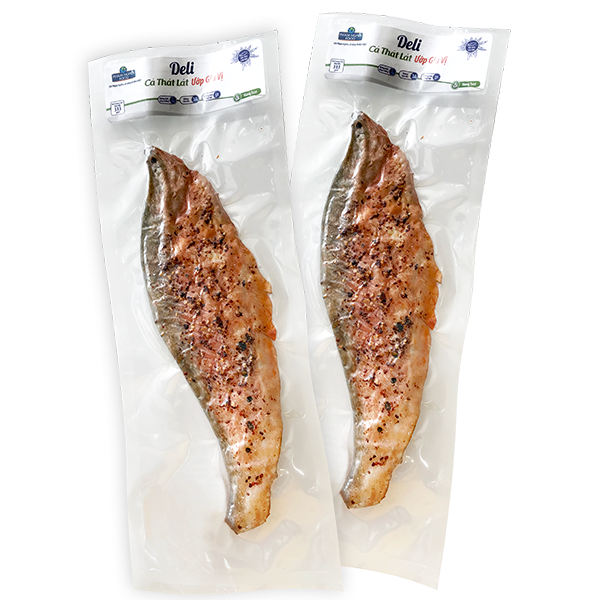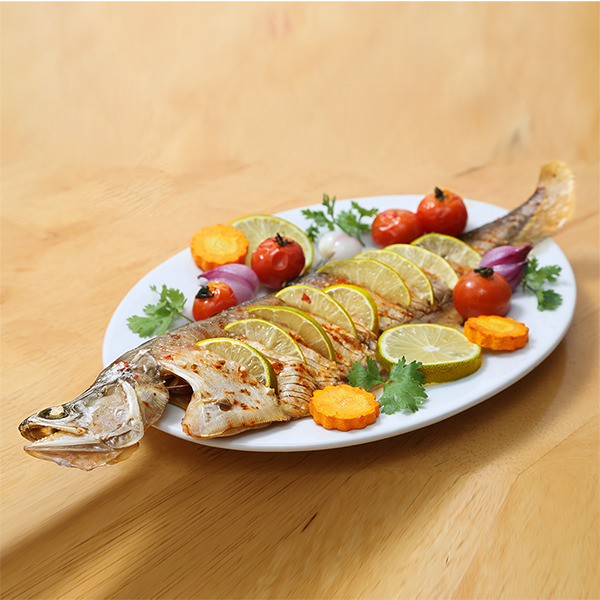Marinated Deboned Featherback Fish
- Marinated Deboned Featherback Fish is especially attractive because of the strong aroma of lemongrass and chili and fully preserves the pure and delicious taste of GlobalGAP cultured cuttlefish.
- The fish is cleaned and cut slightly along the body, helping the seasoning to be absorbed more evenly and stronger. The outside is decorated with pungent chili powder and a little salty salt and fragrant lemongrass scent. The dish is rich in flavor, helps to stimulate the taste when eating, especially extremely “catching prey”, suitable for gatherings of friends, relatives, …
- Cooking instructions: Keep the original packaging of Marinated Deboned Featherback Fish, defrost in water for about 15 minutes (until the product is completely defrosted) for frozen products.
- Marinated Deboned Featherback Fish is processed in a variety of ways such as fried, grilled… and combined with many different unique dishes.
- You can use Marinated Deboned Featherback Fish with many kinds of sauces such as: sweet and salty fish sauce, tamarind fish sauce, seafood green chili sauce, chili sauce, soy sauce, soy sauce, etc.
- Instructions for preservingMarinated Deboned Featherback Fish:
– Frozen goods: Store at -18°C or in the freezer compartment.
– Fresh goods: Store at -1°C to 4°C or in the refrigerator.
- Some typical dishes made from Marinated Deboned Featherback Fish such as: Fresh fried, tomato sauce, pineapple sauce, grilled in foil with green pepper, served with raw vegetables and rice paper….
- Featherback fish can be found in clean ponds and rivers throughout the Central and Southern regions. Furthermore, Featherback fish is frequently used in family meal.
100g of Featherback contains the following calories:
– 84 kilocalories
– 17.5g protein
– 0.1 g carbohydrates
– 1.6 g Fat.
– Minerals and vitamins…
“Eggs and meat from Featherback fish contain quite high amounts of omega fatty acids,” according to VUSTA – Vietnam Union of Science and Technology Associations. Arachidonic acid and eicosapentaenoic acid (EPA) made up 16.50 percent and 10.06 percent of total phospholipids, respectively. As a result, it can be considered a freshwater fish that is beneficial to health, particularly heart health.























